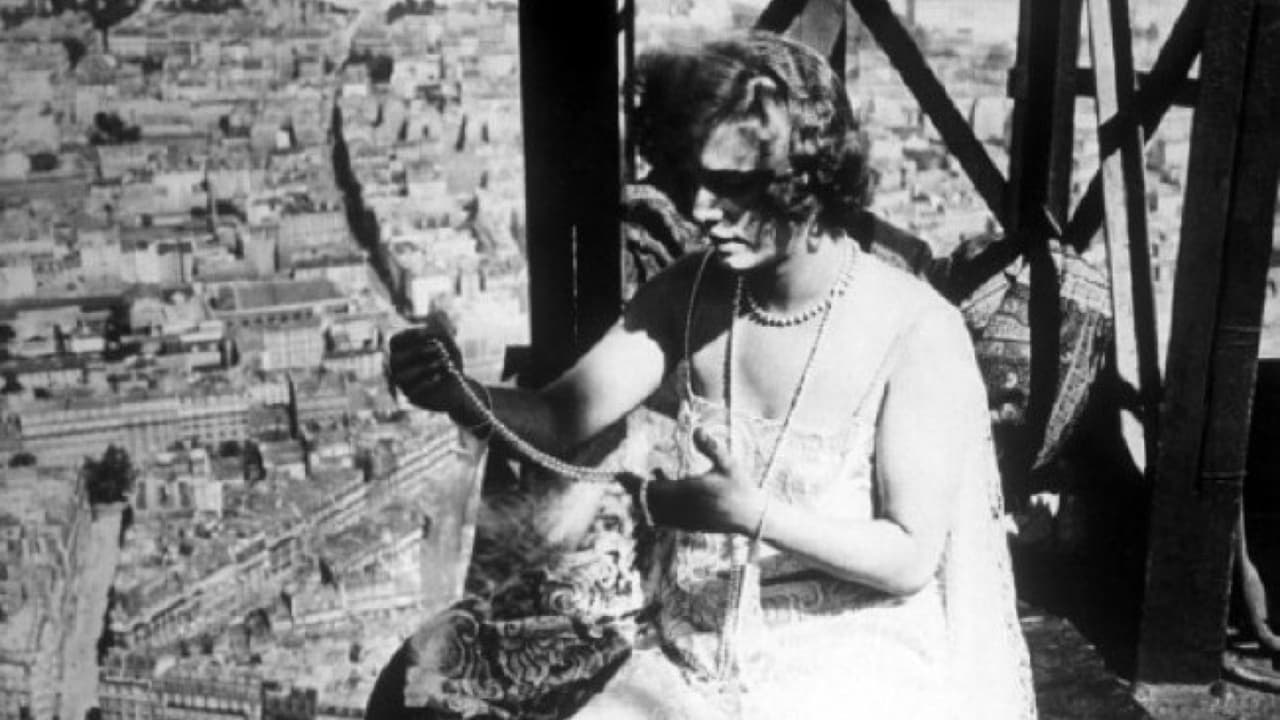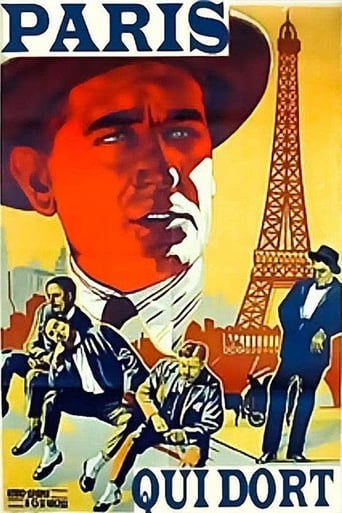



Boring
It is an exhilarating, distressing, funny and profound film, with one of the more memorable film scores in years,
View MoreIt’s sentimental, ridiculously long and only occasionally funny
View MoreThe best films of this genre always show a path and provide a takeaway for being a better person.
View MoreWhat a stunner this little movie is. With fantastic panoramic shots of early nineteen-twenties Paris. Called originally, Paris Qui Dort, plus too, At 3:25 or The Crazy Ray, this early science fiction story is set in, around and on the Eiffel Tower and the empty city Paris streets.A night watchman, waking up one morning, while sleeping on the top of the Eiffel Tower, finds the whole of Paris has fallen asleep, permanently, with only himself for company and roaming the empty streets in bewilderment. After a short while, he stumbles across a small group of other bemused survivors. They explore. They take advantage. They have fun.Parisian born René Clair's (1898 1981), whose other works include À nous la liberté Entr'acte (1924 short), Under the Roofs of Paris (1930) and À nous la liberté (1931), short comedy is a work of vision that today's contemporary cinema makers seem to have taken notice. With post isolationist films as 28 Days Later (2002), The Omega Man (1971) and Terry "Dalek creator" Nation's 1975 BBC television adaptation of "Survivors", this, Paris Qui Dort, is a very fascinating early contender of the sci-fi genre.Placed at the heart is a narrative of while the cats are away the mice shall play, with wonderful shots of a bygone city seen from far above and with moments of comedy, The Crazy Ray is a classic of immense importance to the genre of sci-fi magic. Seen as the very first science fiction fable Georges Méliès's 1902 Le voyage dans la lune (A Trip to the Moon) has set the trend for visionary art, with the silent era composing of some of the greatest artists: Chaplin, Keaton, Clair, Lang and Hitchcock. At 3:25 can be seen as a new and fresh beginning for said filmmaker René Clair and a bold step into the unknown, as sound was soon to take control and all but the greatest has superseded to dominate.Paris Qui Dort is a true gem, and while the mice are at play I highly recommend that you freeze time and find a moment to explore this intriguing visual work of art.
View MoreSadly, I found that this film seriously outstayed its interest; it starts off well with an intriguing concept, that of the lone survivor in a mysteriously abandoned city, and develops this into a socio-comic commentary on the worthlessness of money and valuables in unlimited supply, compared to the real necessities of life. The handful of survivors who find each other become bored of their effortless scroungers' existence and start quarrelling among themselves -- saved only by the arrival of the long-awaited signal from the outside world.Thus far, thus John Wyndham (there are strong parallels here with the novel "The Day of the Triffids"). This silent film is somewhat heavy on its use of intertitles (which do inevitably suffer in translation), is not especially distinguished in its acting and as a comedy not particularly funny. But, having explained away preceding events by invoking a mad professor and then wound up his story by an 'and then they all went back to their previous lives' scene, the film-maker then commits the cardinal error of pressing the reset button -- or in this case, throwing the freeze-ray switch yet again. And again.We get a whole new segment of story driven by the financial travails of only two of the previous five characters, who can't face being poor after having had the whole city to glean from and decide to freeze everybody again so that they can rob them. Only the professor notices, so he reverses the switch yet again... demonstrates to his disbelieving colleague, jerking everybody on and off... the world 'compensates' by being cranked extra fast, Keystone-fashion... and the whole thing descends into slapdash tedium of a fairly primitive kind, which has ceased some time earlier to be entertaining. More or less the entirety of the second half of the film could have been cut (from the young couple parting outside the Eiffel Tower straight to the finding of the ring), and only to its improvement.This film was shown in a double-bill with Buster Keaton's "Three Ages", a film shot in the same year and similarly using camera trickery (what must be one of the earliest animated cartoon sequences featuring a live actor). The comparison was not at all to the favour of "Paris qui dort", alas, which dragged terribly and came across as much more wordy and primitive; it's not entirely fair to judge it against an action comedy, but it is in the frenetic action sequences that this film is the weakest. One gets the impression that the director had just run out of ideas. By the ending of the film I was seriously bored; the Keaton, despite a poor print, woke up the audience (in at least one case, literally) like a shot.
View MoreThis is a super-inventive silent film from the same director (René Clair) who later made the highly original "À nous la liberté!". Oddly, despite being a terrific film and me being a huge fan of silents, I have never heard about it. It certainly deserves to be better remembered.The film begins with a man coming home from his job at the top of the Eiffel Tower. He is amazed to see that everyone has stopped dead in their tracks and are immobile. For a while he thinks he's the only living and moving person, but soon an airplane lands with some others just like himself--mobile and alert. For days the small group cavorts, though after a while tempers flair--after all, they are hour guys and only one woman! Just before they can kill each other, they receive a wireless communication from another woman in Paris, so they run to her address. According to the new lady, her crazy father is an inventor and made a "crase ray" that has literally stopped everyone in their tracks. The guy in the tower and people in the airplane were not effected because the ray had a limited height. The new girl was unaffected because the scientist made the house crase ray-proof! While there is more to this story, I need to point out for a silent it was well written, acted and directed and has aged very well as a result. This fantasy/sci-fi film is so unique and charming, I encourage all lovers of the silents to look for it--you won't be sorry.
View MoreOne has to love these early shorts -- look at the freedom that existed to film more or less whatever subject crossed the artist's mind. And at the self-reference: in the narrative, the characters have the freedom to do more or less whatever crosses their minds. The film itself is the work of a 'mad scientist' about the experiment of the mad scientist within.The construction is both simple and deeply abstract: we begin with a lone figure against the backdrop of Paris architecture, which grows increasingly populated by statuesque mimes, who are manipulated by animated mimes. The movie ends when the level of abstraction is removed. Clearly what have here is a work that is conceived from start to finish as a visual story...something so influential that has survived the test of time, in ways that so many other 'experiments' did not. Modern borrowings from this are found in 'Devil's Advocate', 'Dark City', 'Abre Los Ojos/Vanilla Sky'...
View More